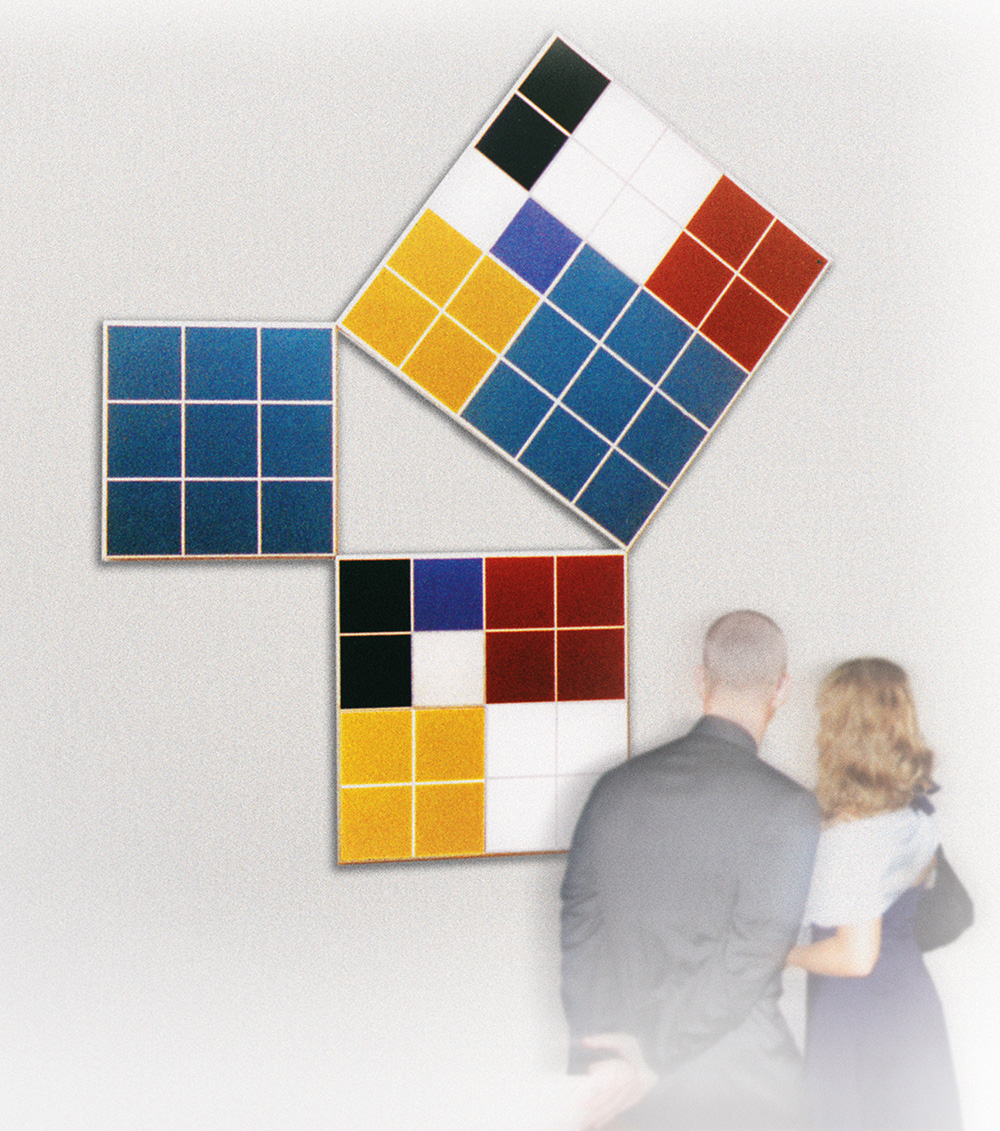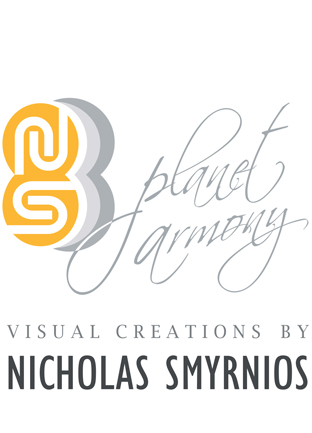
Pythagorean I. Oil on three canvases, 60 x 60 x 2 cm, 80 x 80 x 2 cm, 100 x 100 x 2 cm.
This complex work is a visual proof of the Pythagorean theorem, applied on a right-angle triangle whose sides are in an arithmetic progression (3-4-5), known also as “golden” triangle. It’s remarkable that this triangle is conceivable, formed in space by the three squares of its sides, (i.e. the three stretched canvases).
The colors were chosen in relation to those produced in ancient Greece, with earth and mineral pigments, such as iron oxides (red, brown and yellow ochres), carbon black, calcium carbonate white (chalk), cinnabar and blue frit.
Although the work is about a triangle, the dominant shape, seen in multiple form, is the square, which as an archetypal symbol stands for great ideas. Strong examples of high intellect fruition are, except Pythagoras’ theorem (a2+b2=c2), the Vitruvian Man, Le Corbusier’s Modulor and Einstein’s equation that defines the relation between energy and mass (E = mc2). Some indirect, associative references to prominent works of modern art (mainly by Malevich and Mondrian) are also quite clear.
Keywords: oil painting, smyrnios, multiple, pythagoras, theorem, golden triangle, square, intellect fruition, red, brown, yellow, ochre, carbon black, chalk, cinnabar, blue frit, modern art

